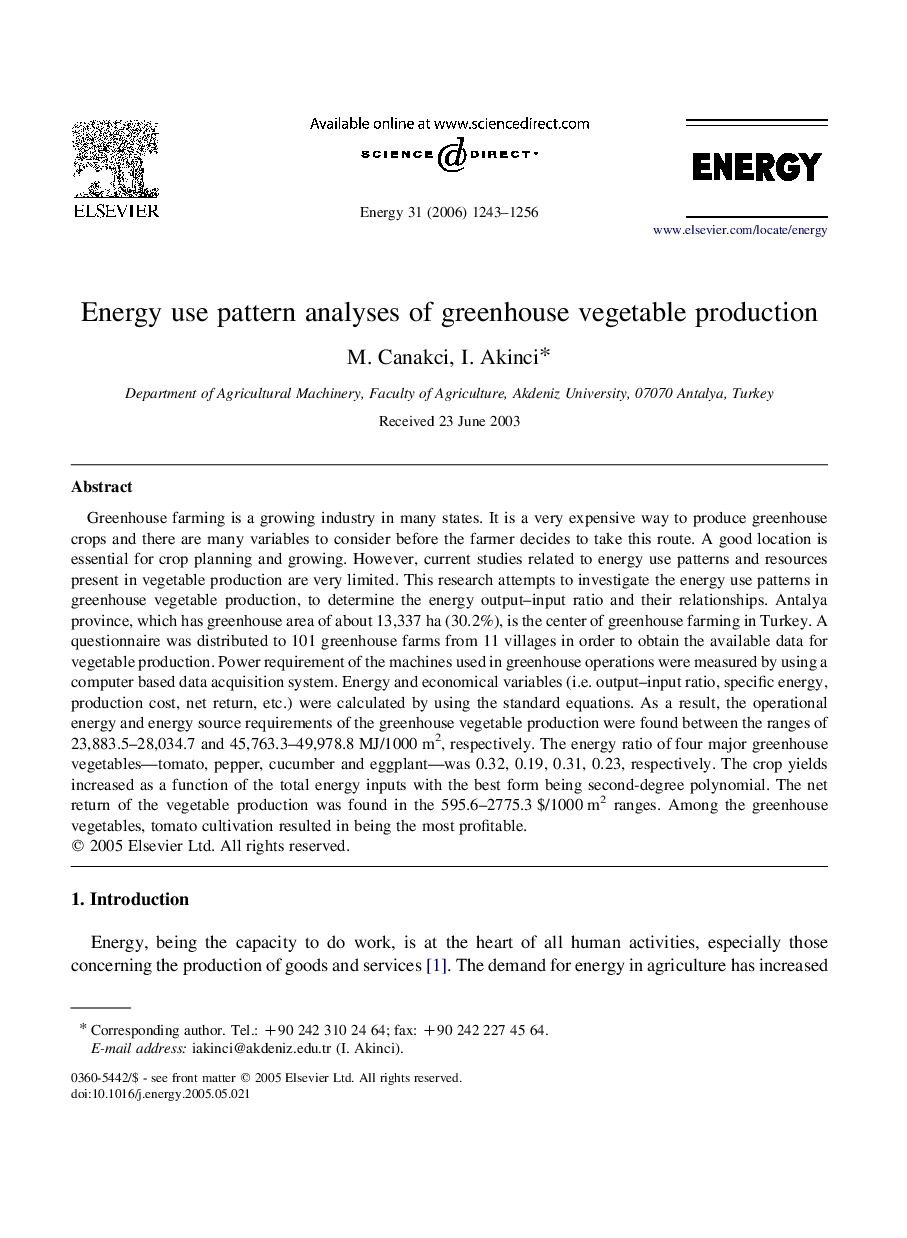| Article ID | Journal | Published Year | Pages | File Type |
|---|---|---|---|---|
| 1736436 | Energy | 2006 | 14 Pages |
Greenhouse farming is a growing industry in many states. It is a very expensive way to produce greenhouse crops and there are many variables to consider before the farmer decides to take this route. A good location is essential for crop planning and growing. However, current studies related to energy use patterns and resources present in vegetable production are very limited. This research attempts to investigate the energy use patterns in greenhouse vegetable production, to determine the energy output–input ratio and their relationships. Antalya province, which has greenhouse area of about 13,337 ha (30.2%), is the center of greenhouse farming in Turkey. A questionnaire was distributed to 101 greenhouse farms from 11 villages in order to obtain the available data for vegetable production. Power requirement of the machines used in greenhouse operations were measured by using a computer based data acquisition system. Energy and economical variables (i.e. output–input ratio, specific energy, production cost, net return, etc.) were calculated by using the standard equations. As a result, the operational energy and energy source requirements of the greenhouse vegetable production were found between the ranges of 23,883.5–28,034.7 and 45,763.3–49,978.8 MJ/1000 m2, respectively. The energy ratio of four major greenhouse vegetables—tomato, pepper, cucumber and eggplant—was 0.32, 0.19, 0.31, 0.23, respectively. The crop yields increased as a function of the total energy inputs with the best form being second-degree polynomial. The net return of the vegetable production was found in the 595.6–2775.3 $/1000 m2 ranges. Among the greenhouse vegetables, tomato cultivation resulted in being the most profitable.
